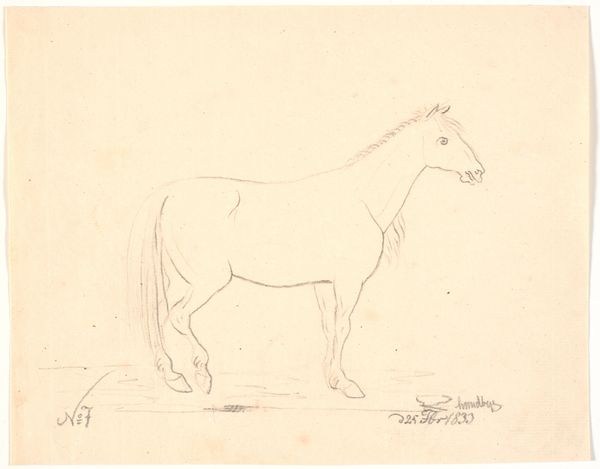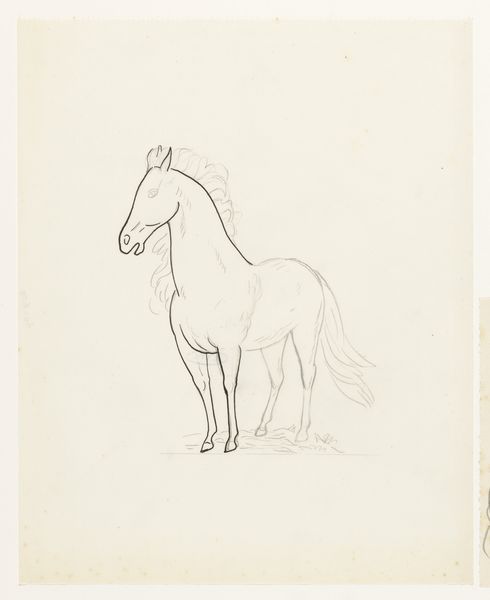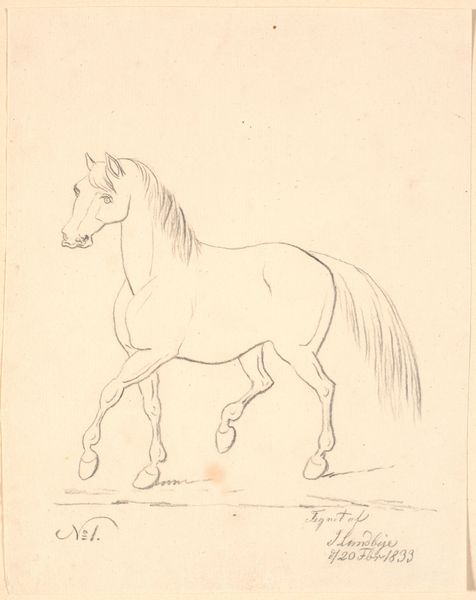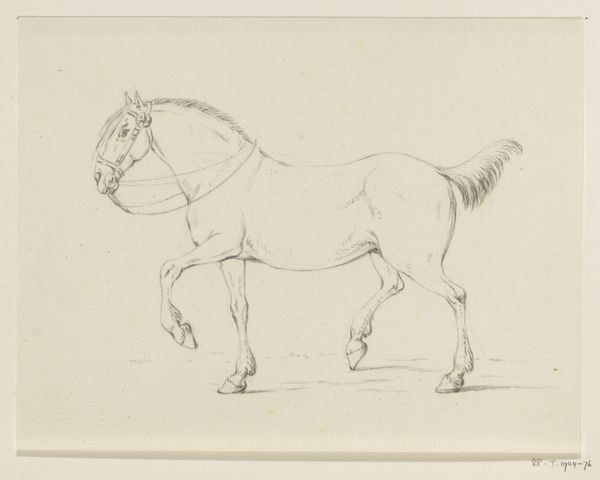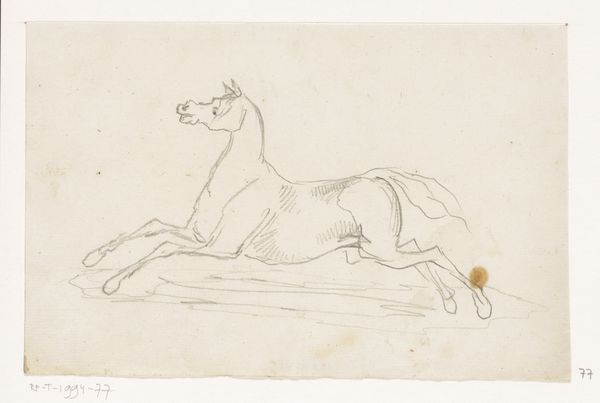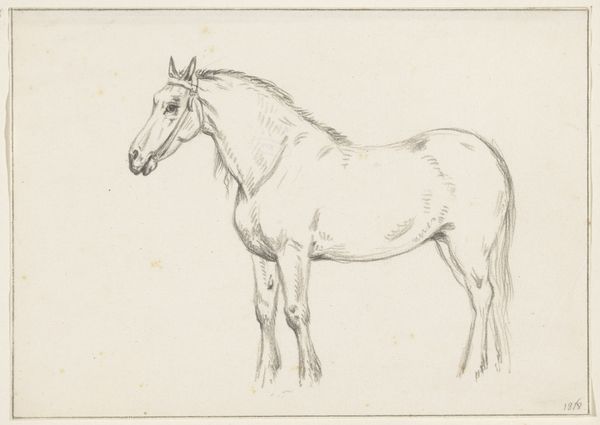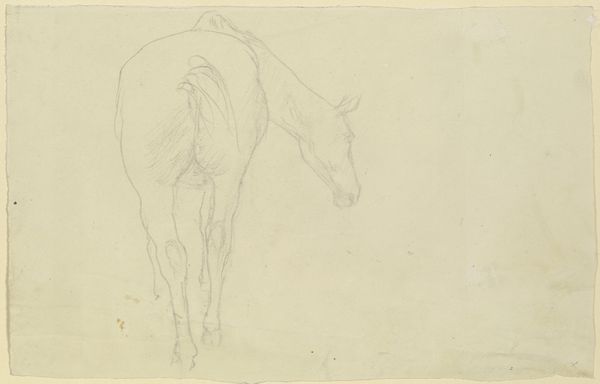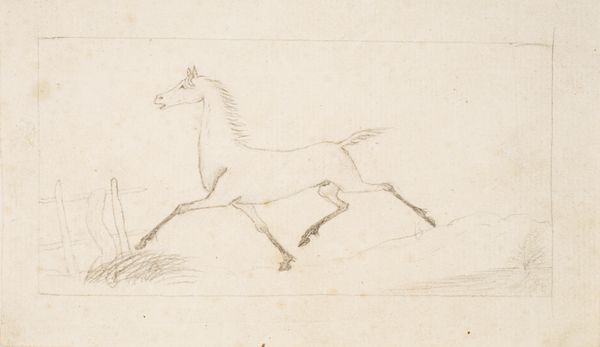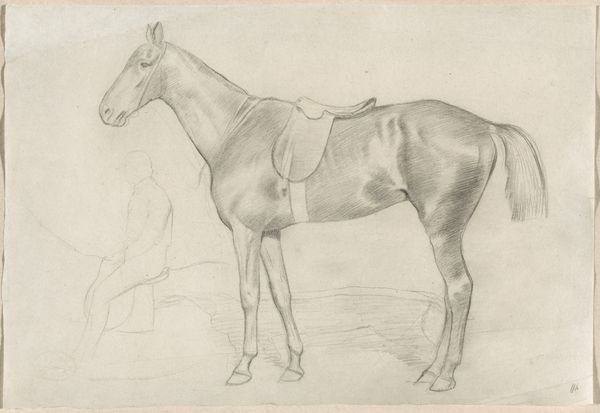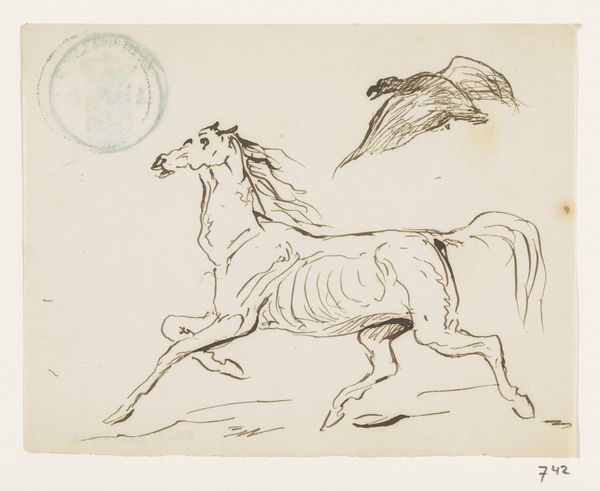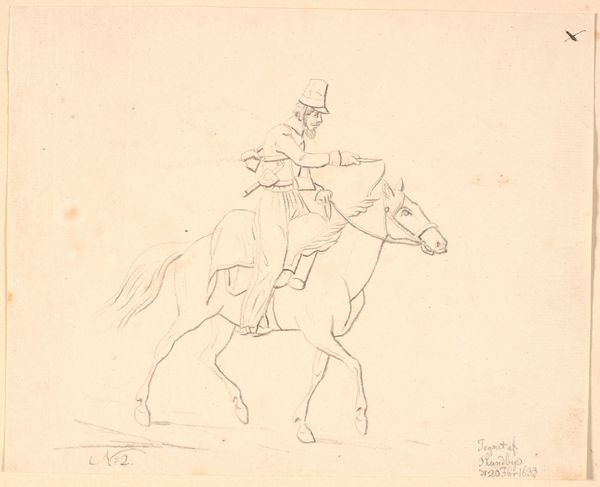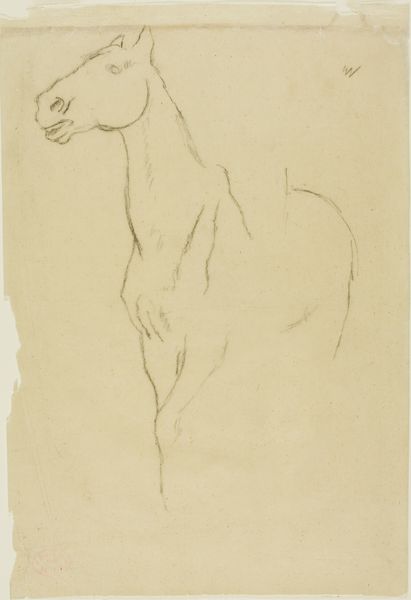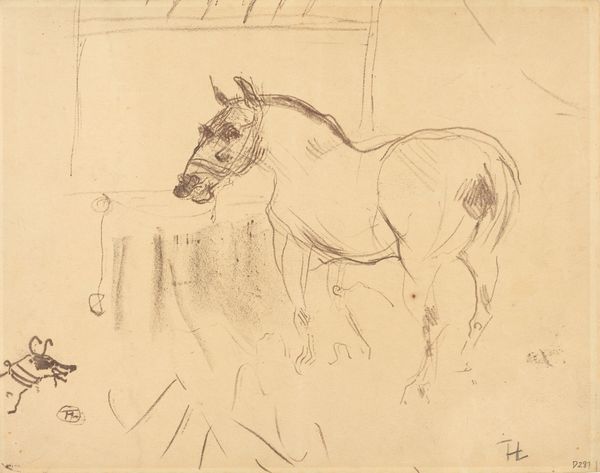
drawing, pencil
#
portrait
#
drawing
#
ink drawing
#
landscape
#
etching
#
pencil
#
realism
Dimensions: 160 mm (height) x 207 mm (width) (bladmaal)
Curator: Welcome. Here we have Johan Thomas Lundbye's drawing, "Hest, der standser op", or "Horse Stopping," completed in 1833. Editor: Well, that horse seems awfully startled! It's captured in this sort of frozen moment, all delicate pencil lines and sudden halt. Is it me, or does it almost feel… ghostly? Curator: That ethereal quality might be from the medium, a light pencil on paper. Lundbye was part of the Danish Golden Age, deeply invested in portraying the Danish landscape and, perhaps, a sense of national identity through its animals. Drawings like this were often studies. Editor: Studies, huh? To me, it speaks more of the uncanny. It reminds me of those fleeting moments when animals seem to be perceiving something we humans are blind to. There's almost a fable quality to it, the simplicity really amplifies the raw energy. Curator: Fascinating. Given the socio-political climate of Denmark in the 1830s, the horse could represent a national symbol, a potent force harnessed—or in this case, momentarily halting—waiting for direction. The sketch becomes about control and national identity in a period of rising nationalism. Editor: Or, maybe the horse just saw a really big spider. I'm only kidding. I see the layers you're peeling back, I really do. The sketch quality makes it accessible, like peeking into the artist's notebook and glimpsing a raw moment of surprise or apprehension. Curator: I find the realism notable, despite its seeming simplicity. He is really capturing movement. The slight tension in the leg about to hit the ground... you feel the potential energy. This contributes to understanding the cultural value that this representation could provide. Editor: So, beyond national symbolism, what I am left with is a sense of contained power—a living being interrupted, mid-stride. Curator: Exactly. This is far more than simply a drawing of a horse. It offers insights into cultural values, the artist's vision, and perhaps Denmark's perception of itself during this period. Editor: Well, between national identity and phantom arachnids, I'll certainly never look at a horse sketch quite the same way again. Thanks for widening the view!
Comments
No comments
Be the first to comment and join the conversation on the ultimate creative platform.
